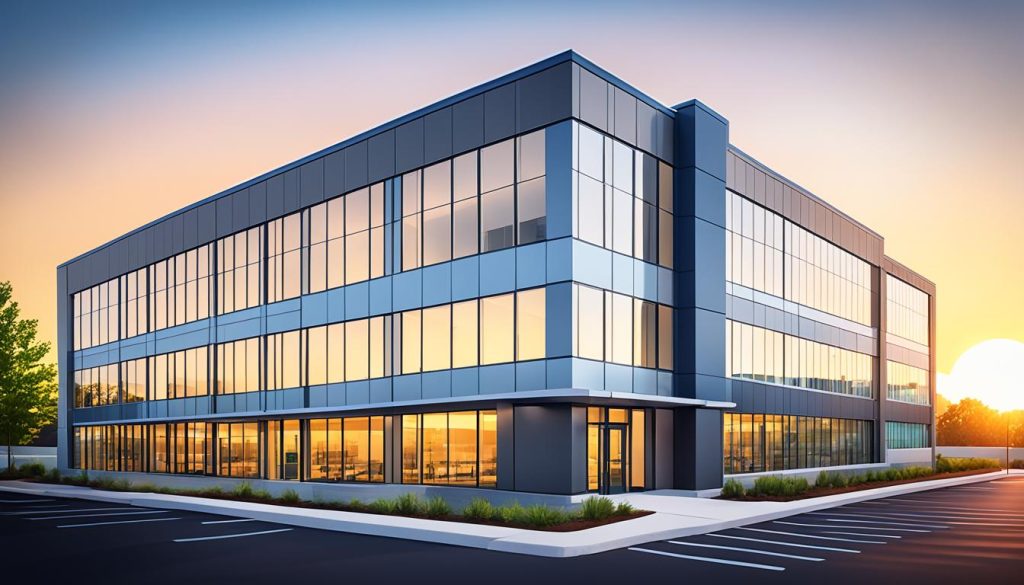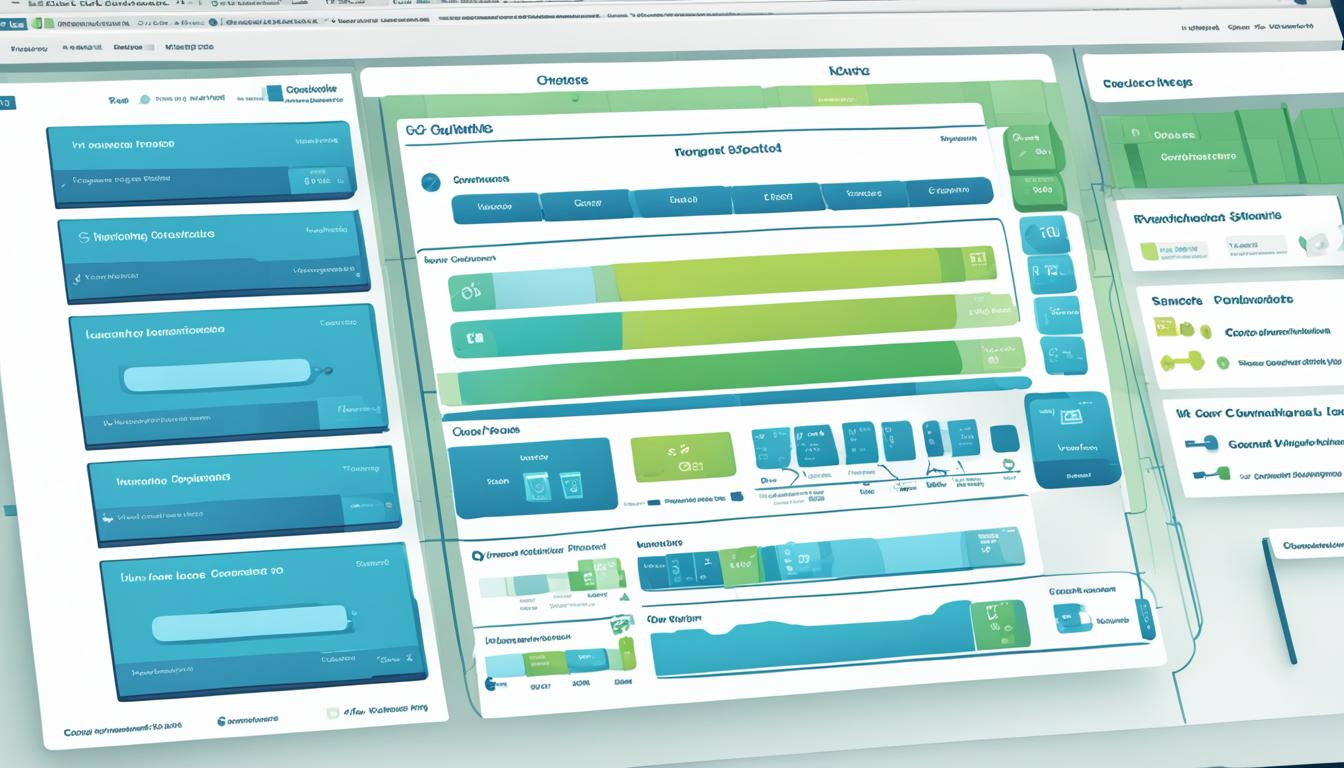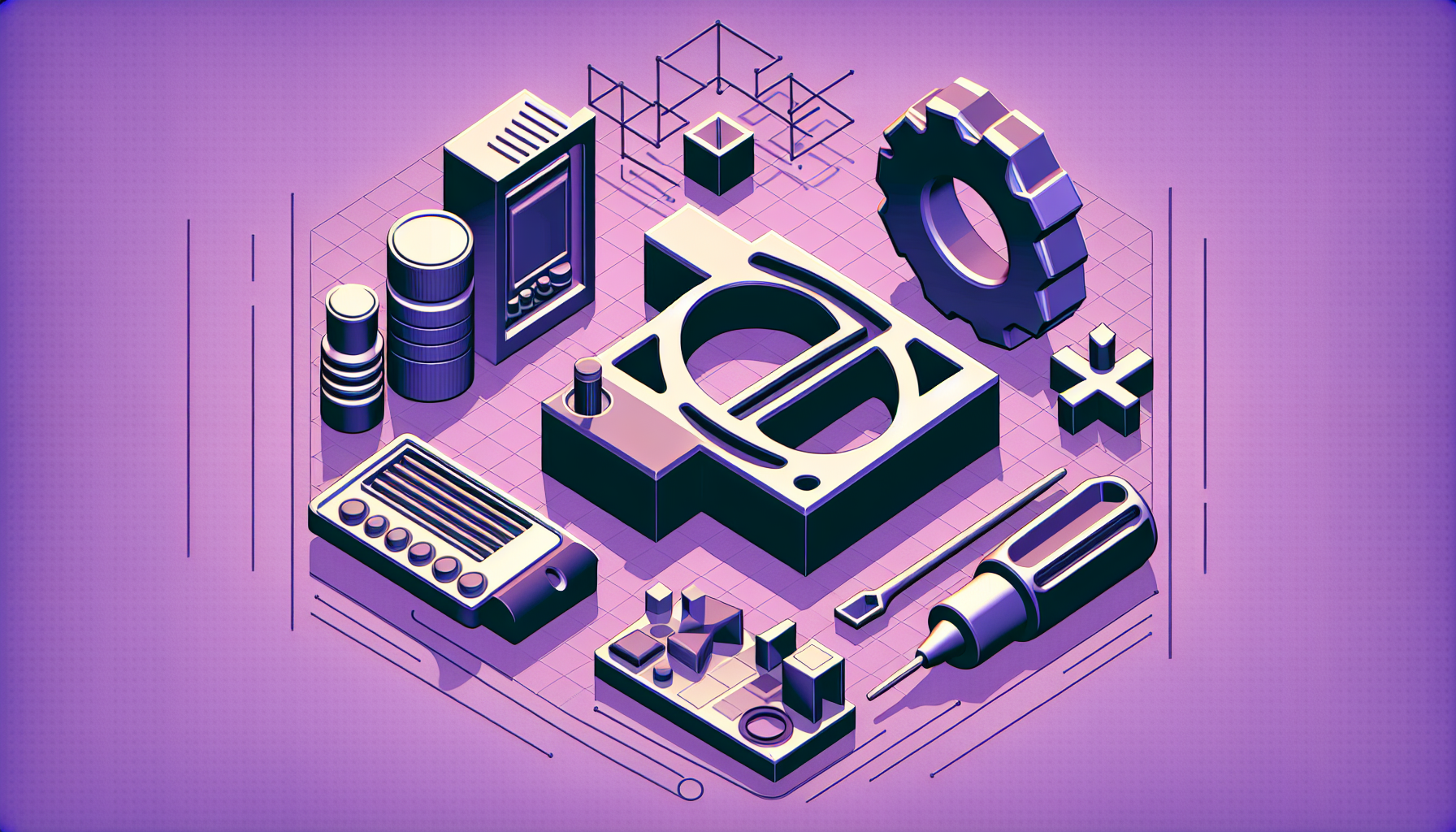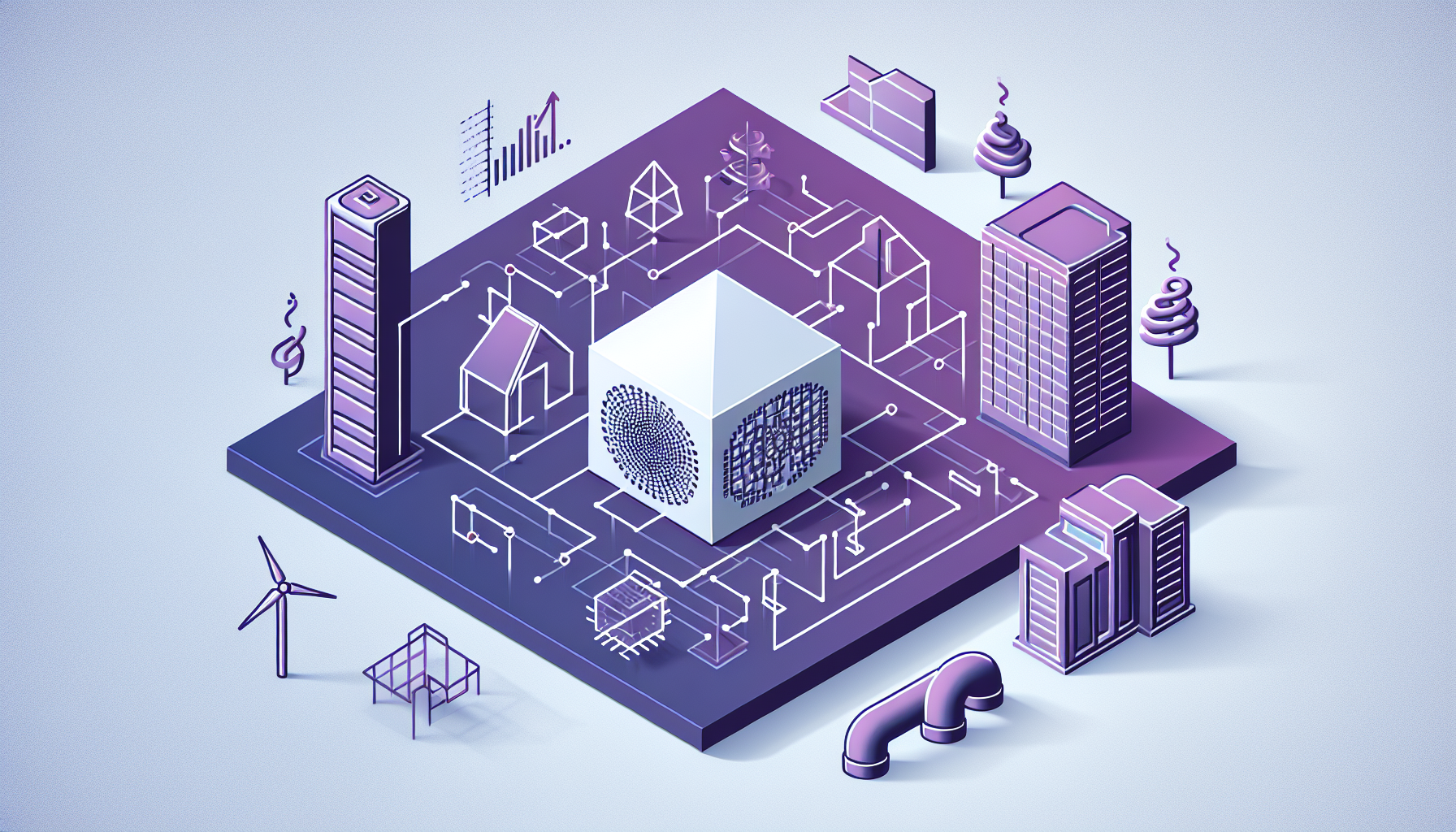You can make HVAC systems better by using scenario modeling in heat load calculation software. This method looks at different factors and tests various design options. It helps improve building performance, save energy, and keep occupants comfortable.
Heat load calculation software has advanced algorithms to check important things like building size, location, insulation, and more. By adding these details, you get accurate calculations for the right system size. This leads to big energy savings and better HVAC performance.
With scenario modeling, you can try out different design plans. You can see how different equipment, control strategies, and building improvements affect efficiency. This helps you make smart choices for your HVAC design, saving costs and promoting sustainability.
Using scenario modeling in heat load calculation software lets you optimize your HVAC system for top efficiency. It cuts energy use and makes indoor spaces more comfortable. This new approach is changing how experts optimize HVAC systems, leading to smarter, greener buildings.
Understanding the Importance of HVAC System Optimization
HVAC system optimization is key to making buildings more energy efficient and perform better. By adjusting your heating, ventilation, and air conditioning systems, you can cut down on energy use, lower costs, and improve the air quality inside.
The Role of Efficient HVAC Systems in Building Performance
Efficient HVAC systems make buildings work better by:
- Reducing energy waste
- Improving temperature control
- Extending equipment lifespan
- Minimizing maintenance needs
Getting your HVAC system the right size and optimizing it helps avoid problems like short cycling and unexpected breakdowns. This means your system runs smoothly and works better.
Impact on Energy Consumption and Cost Savings
Optimizing your HVAC system can save a lot of energy and cut costs. By using advanced software for heat load calculation, you can:
- Size equipment right
- Lower operational costs
- Reduce energy waste
- Boost system efficiency
This leads to lower utility bills and a better return on investment for building owners and managers.
Enhancing Occupant Comfort and Indoor Air Quality
HVAC optimization does more than just save energy. It also makes people more comfortable and improves the air quality inside. The benefits include:
| Aspect | Improvement |
|---|---|
| Temperature Control | Consistent comfort levels |
| Humidity Management | Reduced mold growth risk |
| Air Filtration | Improved allergen removal |
| Ventilation | Better air circulation |
By focusing on these areas, you can make indoor spaces healthier and more productive for everyone inside.
Introduction to Heat Load Calculation Software
Heat load calculation software changes the game for HVAC system design. It lets engineers and designers make heating and cooling systems that work well and save money. Let’s dive into what makes these tools so powerful.
Key Features and Functionalities
Today’s HVAC software has many tools to make designing easier. These include:
- Automated data collection
- Standardized calculations
- 3D visualization tools
- Customizable reporting
These tools help do heat load assessments fast and accurately. This saves time and cuts down on mistakes.
Benefits of Using Advanced Calculation Tools
Advanced tools bring big benefits:
- More accurate system sizing
- Automation saves time
- Quickly run different scenarios
- Better decision-making
Using these tools helps design HVAC systems that work best and perform well.
Integration with Building Information Modeling (BIM)
BIM integration takes HVAC design further. It connects HVAC with other building systems smoothly. This means:
- Real-time data sharing between different parts of the design
- Better teamwork
- Finding and fixing design issues early
- Smaller project delays
With BIM, you can design buildings that think about everything that affects them.
| Feature | Benefit |
|---|---|
| Automated calculations | Less chance of mistakes |
| 3D visualization | Better sharing of design ideas |
| BIM integration | Improved team coordination |
| Cloud-based access | Analysis on-site |
Fundamentals of Scenario Modeling in HVAC Design
Scenario modeling changes the game in HVAC design. It lets you test and compare different design options. You can see how systems work under various conditions. By using advanced techniques, you can try out different HVAC setups, equipment, and control methods to find the best for your project.
With scenario modeling, you use special software to simulate how buildings perform over time. These tools look at important things like weather, how people use the building, and how efficient equipment is. This gives you a full picture of how your HVAC system will do in real life.
- Creating baseline scenarios
- Developing alternative design strategies
- Running system performance simulations
- Analyzing and comparing results
- Optimizing for energy efficiency and cost-effectiveness
Using these parts, you can make choices based on data. This leads to HVAC systems that are more efficient, comfortable, and save money.
| Scenario Type | Key Considerations | Potential Benefits |
|---|---|---|
| Baseline | Current building conditions, standard equipment | Establishes performance benchmark |
| Energy-Efficient | High-efficiency equipment, improved controls | Reduced energy consumption, lower operating costs |
| Renewable Integration | Solar panels, geothermal systems | Decreased reliance on grid power, sustainability |
| Advanced Controls | Smart thermostats, occupancy sensors | Improved comfort, optimized energy use |
Using scenario modeling in your HVAC design lets you create solutions that fit your building perfectly. By testing different HVAC designs with advanced techniques, you’re ready to deliver the best performance in any project.
Optimize HVAC Systems with Scenario Modeling
HVAC optimization techniques have changed how we design and manage building climate control. Scenario modeling is a key tool in this change. It lets you simulate different designs and compare their performance before you start.
Creating Baseline Scenarios
First, set up a baseline scenario that mirrors your current HVAC setup or industry norms. This baseline is a starting point for seeing how you can improve. It should include energy use, costs, and comfort levels.
Developing Alternative Design Strategies
Then, design new alternatives using the latest HVAC optimization methods. Think about adding smart thermostats, systems that adjust refrigerant flow, or geothermal heat pumps. Each new design should aim to be more efficient, comfortable, and eco-friendly.
Comparative Analysis of Different Scenarios
Compare your baseline and new designs carefully. Look at energy use, costs, and how happy occupants are. This approach helps you find the best HVAC solutions for your needs.
| Scenario | Energy Consumption (kWh/year) | Annual Operating Cost ($) | Comfort Score (1-10) |
|---|---|---|---|
| Baseline | 50,000 | 7,500 | 7 |
| Smart Thermostat Integration | 45,000 | 6,750 | 8 |
| VRF System | 40,000 | 6,000 | 9 |
| Geothermal Heat Pump | 35,000 | 5,250 | 9 |
Scenario modeling gives you deep insights into HVAC improvements. It helps you make smart choices. You can balance energy efficiency, costs, and comfort in your HVAC designs.
Leveraging Data-Driven Decision Making in HVAC Optimization
Data-driven decision making changes how we optimize HVAC systems. By looking at performance metrics, we get insights to make our systems better. Heat load calculation software gives us detailed reports. These help us choose the right system size and equipment.
With data analytics, we can spot areas to improve in our HVAC systems. This method lets us:
- Find energy waste
- Optimize control strategies
- Support investments in energy-efficient tech
When making HVAC decisions, having solid data makes things clearer. We can compare different options and see what will happen before we act. This lowers risks and makes our optimizations more likely to work.
| Traditional Approach | Data-Driven Approach |
|---|---|
| Relies on past experiences | Uses real-time performance metrics |
| Uses trial and error | Uses predictive modeling |
| Uses generic solutions | Uses tailored optimizations |
Using data analytics in HVAC decisions builds a base for ongoing improvement. Regular checks of performance metrics keep us ready for problems. This keeps our systems running at their best.
Advanced Techniques for Energy Efficiency through Scenario Modeling
Scenario modeling is a powerful tool for making buildings more energy efficient. It lets you try out different options to improve your HVAC system and cut down on energy use. Let’s look at some advanced methods that use this approach.
Incorporating Renewable Energy Sources
Using renewable energy is a big step forward for HVAC efficiency. With scenario modeling, you can see how solar panels or geothermal systems change your building’s energy use. You can check how these eco-friendly options work with your HVAC, possibly lowering your need for grid electricity.

Optimizing Control Strategies
HVAC controls are key to how well a system works. Advanced modeling helps you adjust these controls better. You can test demand-controlled ventilation or adaptive setpoint management to balance comfort and save energy.
Analyzing Building Envelope Improvements
How well your building is sealed affects HVAC performance. Scenario modeling lets you look at the effects of better insulation or high-performance windows. By simulating these changes, you can see how they affect heating and cooling loads.
| Technique | Potential Energy Savings | Implementation Complexity |
|---|---|---|
| Renewable Energy Integration | 20-30% | High |
| Advanced HVAC Controls | 15-25% | Medium |
| Building Envelope Improvements | 10-20% | Medium to High |
By using these techniques together, you can make a complete plan for saving energy. Scenario modeling finds the best mix of actions, helping you improve your building’s energy use for better performance and savings.
Implementing Predictive Maintenance Strategies Using Scenario Modeling
Predictive maintenance changes how we keep HVAC systems running smoothly. It uses scenario modeling to guess what your system might need. This lets you check how equipment will perform over time and spot problems early.
By using this tech, you can keep a closer eye on your HVAC units and make them last longer.
Scenario modeling lets you make virtual copies of your HVAC system in different situations. It finds weak points and helps plan maintenance better. By looking at these scenarios, you can fix things at the best time, cutting down on sudden breakdowns and expensive fixes.
Working with building automation systems makes predictive maintenance even better. Smart sensors send data on how the system is doing straight to your software. This info lets you adjust maintenance plans based on what’s really happening, making sure your HVAC is always reliable.
| Benefit | Impact on HVAC System |
|---|---|
| Proactive Repairs | Reduced downtime and extended equipment life |
| Optimized Scheduling | Efficient resource allocation and cost savings |
| Data-Driven Decisions | Improved system performance and energy efficiency |
Using predictive maintenance with scenario modeling changes how you manage HVAC systems. Moving from reacting to acting early makes your system more reliable. It also uses energy better and cuts down on costs. With ongoing checks, you can fix problems before they start, keeping everyone comfortable and efficient.
Case Studies: Successful HVAC Optimizations Using Scenario Modeling
Scenario modeling has been key in making HVAC systems better in many projects. Let’s look at real examples that show how this method helps in different situations.
Commercial Building Retrofit
A 20-story office building in Chicago got an energy-saving upgrade with scenario modeling. They looked at different HVAC setups, like variable air volume systems and chiller upgrades. This plan reduced HVAC energy use by 32% and paid off in 3.5 years.

New Construction Energy-Efficient Design
In Austin, Texas, a new building was designed with scenario modeling. They compared geothermal heat pumps with traditional rooftop units. Geothermal was the best choice, using 28% less energy and giving better comfort to people inside.
Industrial Facility HVAC Upgrade
An automotive plant in Detroit wanted to better its HVAC system while keeping the air clean. Engineers used scenario modeling to look at different options, like heat recovery systems and demand-controlled ventilation. This new setup cut energy use by 40% and made the air cleaner and more stable.
| Project Type | Location | Energy Savings | Key Improvement |
|---|---|---|---|
| Commercial Retrofit | Chicago, IL | 32% | VAV system & chiller upgrade |
| New Construction | Austin, TX | 28% | Geothermal heat pumps |
| Industrial Upgrade | Detroit, MI | 40% | Heat recovery & demand-controlled ventilation |
These examples show how scenario modeling greatly improves HVAC efficiency in various projects. By using this tool, you can save a lot of energy and make your HVAC systems work better in your next project.
Conclusion
Heat load calculation software with scenario modeling is changing the game for HVAC optimization. It lets you design systems that are more precise, efficient, and comfortable for people inside. As buildings get more complex and energy standards get stricter, these tools are key for sustainable design.
The future of HVAC optimization is looking bright. We can expect new features like AI and machine learning soon. These will help you make even better HVAC solutions. You’ll be ready to handle the challenges of modern building design with ease.
HVAC optimization does more than save energy. It helps make a greener future and healthier indoor spaces. By using these tools, you’re leading the way in sustainable building design. As the industry changes, your skills in using these advanced technologies will be very important.
The journey to the best HVAC systems is never-ending. Keep being curious, keep learning, and explore new ways to improve building performance. Your work in HVAC optimization today will shape the sustainable buildings of tomorrow.





0 Comments